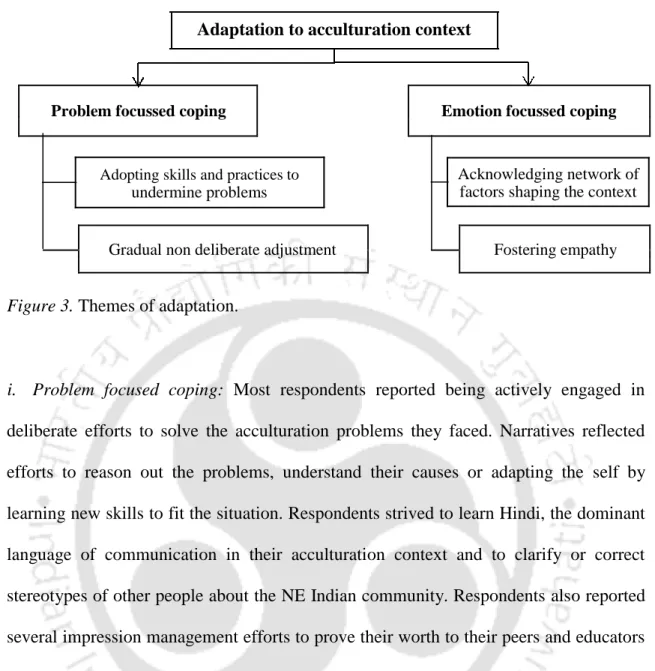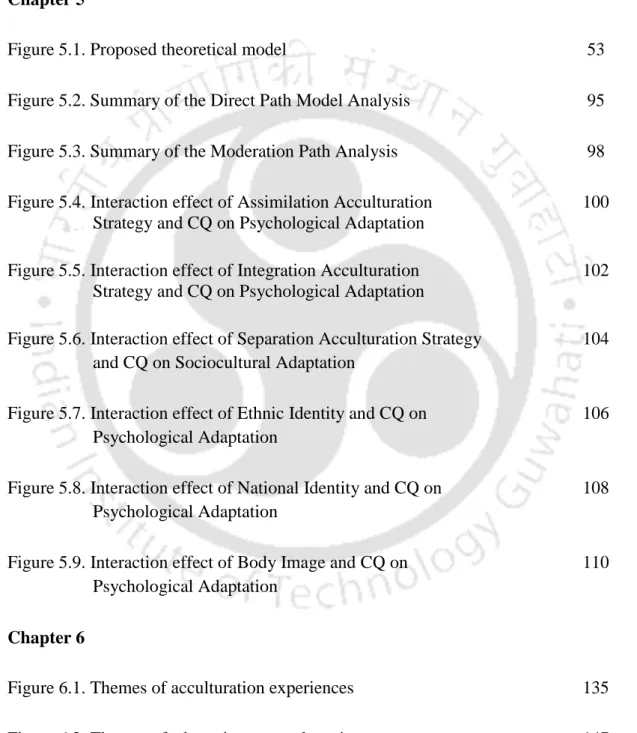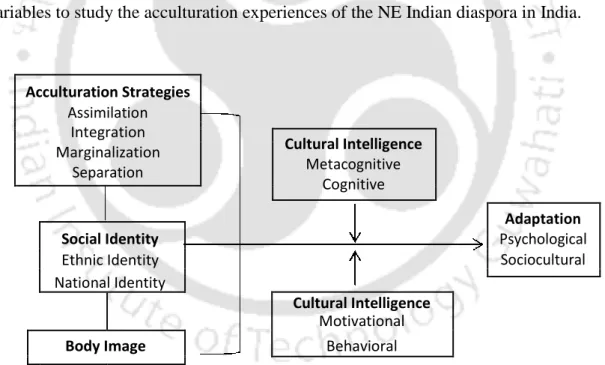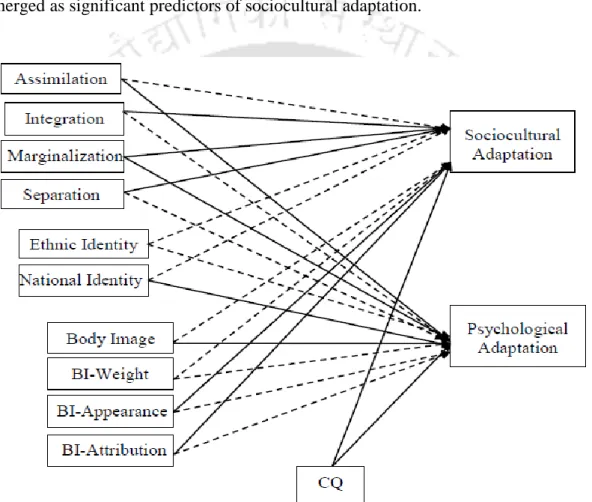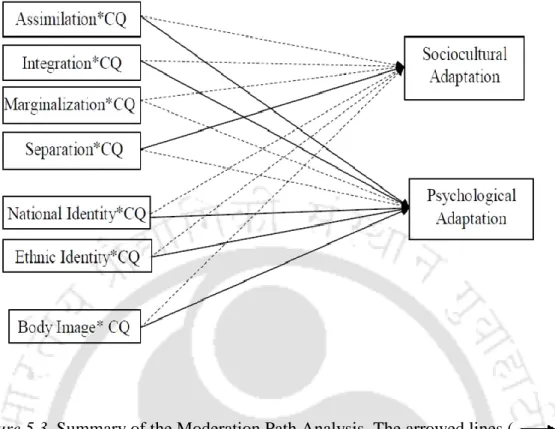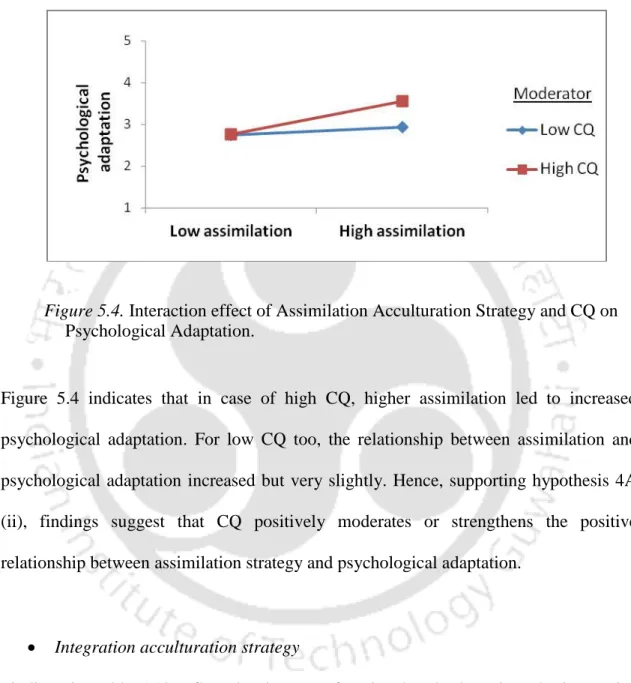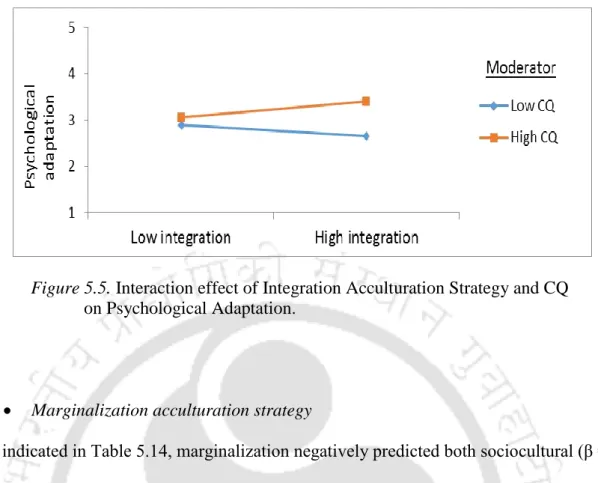Specifically, the focus of this research is on the ethnic and physiognomic minority community of 8 North East (NE) Indian states. A major reason for the conflicted social identity is the physiognomic peculiarity of the NE Indian people and the experience of social alienation. Thus, the discrimination faced in mainland India due to distinctive appearance (Walters & Subba, 2013; McDuie-Ra, 2013) is likely to influence the body image of the NE Indian diaspora.
The answer to this problem emerged in the form of the cultural intelligence (CQ) construct as introduced by Earley and Ang (2003) in a multinational organizational setting. Body Image: It is the general attitude and evaluation regarding the body and appearance of the self. This finding is consistent with the propositions of social identity (Tajfel & Turner, 1986) and self-categorization (Turner, Hogg, Oakes, Reicher, & Wetherell, 1987) theories; as well as empirical findings reporting prominent ethnic identity in minority communities in multicultural contexts ( Phinney, 1992 ).
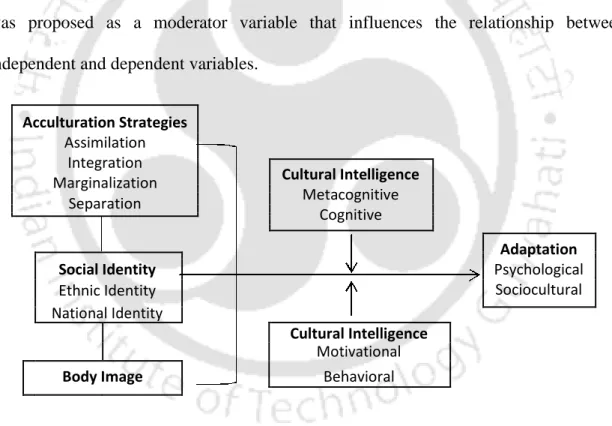
Experience and Consequences of Acculturation - A Qualitative Inquiry
Usually, stereotypes and associated prejudices are resistant to change and consequently created persistent problems that affected the long-term adaptation of the sample. Rediscovering the Self: This theme focuses on the changes in self-perception or self-concept that usually result from any social and life-changing event such as acculturation (Amiot, De la Sablonniere, Terry, & Smith, 2007). The respondents recognized both the virtues and shortcomings of the culture and strove to develop within themselves the perceived positive aspects of the new culture.
Additionally, at the social level, the salience of NE Native American identity was reported, as the particular physiognomy of the sample formed the most important aspect of their identification in the context of acculturation (Wouters & Subba, 2013). Respondents also reported more efforts at impression management to prove their worth to their peers and teachers, who often judged them to be of lower intellectual ability, as some communities in NE India have government entitlements to reservations in educational and work institutions. Respondents reflected an awareness of the differences between their own culture and that of other parts of India and how these differences, together with social and economic competition for shared resources, created prejudice between groups.
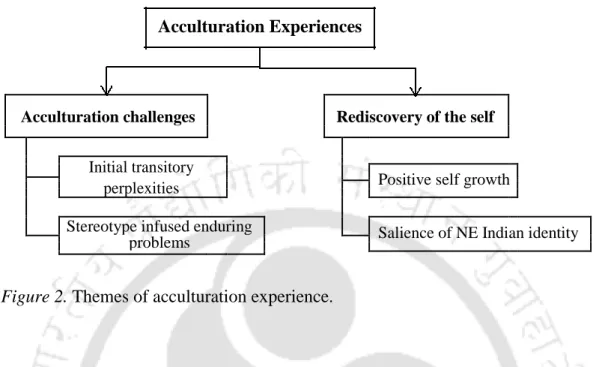
Conclusion
These reported correlations of body image and acculturation strategies are also indicative of links between body image, self-esteem, and adjustment efforts. However, discrimination on the basis of their particular physiognomy and ethnicity can work to hinder the sample's self-esteem. Thus, ethnic identity did not contribute much to the sample's self-esteem or body image.
Another context-specific finding is the rejection of the assumed negative relationship between national identity and body image. The empirical analysis of the role of CQ in the acculturation context yielded novel findings that are ripe for future research. On the other hand, in the case of the variables that reduced adjustment, CQ worked to reduce their decreasing effects.
Contents
Introduction
Literature Review 2.1 Acculturation
Rationale for the Current Research Chapter 4 Research Design
Study 1: Testing the Proposed Theoretical Model of Acculturation - A Quantitative Inquiry
List of Tables
List of Appendices
List of Abbreviations
Literature Review
- Acculturation
- Theories of acculturation
- Empirical findings
- Culture and acculturation: Indian context
- Social Identity
- Theories of social identity
- Development and integration of social identity
- Ethnic identity
- Empirical findings
- Body Image
- Dimensions of body image
- Empirical findings
- Cultural Intelligence
- Dimensions of CQ
- Empirical findings
- Adaptation
- Dimensions of adaptation
- Empirical findings
The attitude of the host group towards different groups of migrants can be different (Williams & Berry, 1991). The attitude dimension refers to liking or disliking the body as a whole or certain parts of the body. Cognitive CQ: Refers to knowledge of the cultural environment and knowledge of the self embedded in that environment.
Being aware of the cultural influence on the behavior and cognition of oneself and others in an intercultural interaction. It basically relates to the forced or voluntary withdrawal of the individual from the environment. Often, adaptation is accompanied by a moderate level of cultural conflict due to the incompatibility of aspects of the two cultures in contact (Berry, 1997).
Rationale for the Current Research
Res earch Design
Emerged in response to the limitations of using a typical single-approach research design (Doyle, Brady, & Burne, 2009); the mixed methods design combines the strengths of both quantitative and qualitative research designs. Therefore, rather than using either approach alone, a mixed methods design can provide a comprehensive understanding of the research problem. This classification is based on four factors, that is, the sequence of data collection, the priority assigned to quantitative or qualitative research, the stage in the research process where the integration of quantitative and qualitative approaches takes place, and the potential use of an action - oriented perspective in the research study.
In this method, the quantitative and qualitative data collection is carried out in two separate phases, in the order of quantitative followed by the qualitative data collection. Priority is usually given to the quantitative approach, but can also be given to the qualitative approach or to both approaches equally. Results from the two approaches are integrated in the data interpretation phase and findings can be proposed to have an applied implication.
The sequence of data collection was first quantitative, followed by the qualitative study, and both studies were given equal priority. The first phase of the research consisted of the quantitative study, which aimed to empirically test a proposed research model which integrated certain relevant variables in the acculturation context under evaluation. Using only standardized measures would be insufficient to provide comprehensive and culture-specific explanations for the intricacies of the current acculturation context.
Therefore, the second phase of the study consisted of qualitative interviews to explore respondents' challenges and experiences and to explore coping mechanisms. Accordingly, Chapter 5 summarizes the parts of the quantitative research and Chapter 6 describes the qualitative research. The opinions and experiences expressed in the qualitative phase were used to strengthen the analysis of the quantitative findings.
In addition, the findings of both studies have been incorporated into future action-oriented research to develop interventions, training and policies to improve peaceful multicultural coexistence.
Testing the Proposed Theoretical Model of Acculturation - A Quantitative Inquiry
- Proposed Research Model
- Research Questions & Hypotheses
- Method
- Measurement instrument
- Sample
- Procedure
- Data analysis
- Results
- Structural Equation Modeling: Basic introduction
- SEM: Assumption testing
- CFA: Measurement model fit & psychometric evaluation
- Basic statistical analysis
- Structural model evaluation
- Discussion
- Introduction
- Research Approach: Interpretative Phenomenological Analysis
- Method
- Data collection
- Sample
- Procedure
- Analysis
- Results and Discussion
Body Image: Defined as overall attitude and evaluation regarding body and appearance of the self. Social identity issues of the migrant groups are often manifested as lowered body image (Ivezaj et al., 2010; . Ricciardili et al., 2007). Body image serves as one of the main domains of self-esteem (Mendelsen et al., 2000).
Therefore, the sample consisted only of the NE Indian diaspora, which has the above-mentioned physiognomy. Ethical issues related to the study and data collection were approved by the institution's doctoral study review committee. Informed consent was taken from the participants in the form of a questionnaire cover letter.
Correlation analysis (Table 5.6) showed that most of the independent variables were significantly related to the dependent adaptation variables as proposed in the model. The direct path model assessed the predictive relationship of the independent variables with the dependent variables. Therefore, the presence of the interaction term produced an effect of ethnic identity on the dependent variable.
These associations should be viewed through the lens of the sample's self-esteem in the acculturation context. The geographical isolation and resulting political, economic and cultural marginalization of the northeastern Indian region (Guyot-Rechard, 2013); shaped the NE Indian lifestyle, social structure, culture and traditions in stark contrast to the Indian mainland (Haokip, 2012). After integration; therefore, separation emerged as the second most commonly pursued acculturation strategy among the sample.
Consent to participate in the study and audio recording of the entire interview session were included. The analysis of the interview narratives yielded two major themes related to the acculturation of the sample: (i) Acculturation Challenges, and (ii) Rediscovery of the Self. None of the respondents were fluent in Hindi, the main language of communication in the NCR region.
Efforts to achieve new aspects of the ideal self resulted in respondents' reported self-enhancement. Narratives also indicated that respondents attempted to clarify and correct mainland Indian people's stereotypes about the NE Indian community.
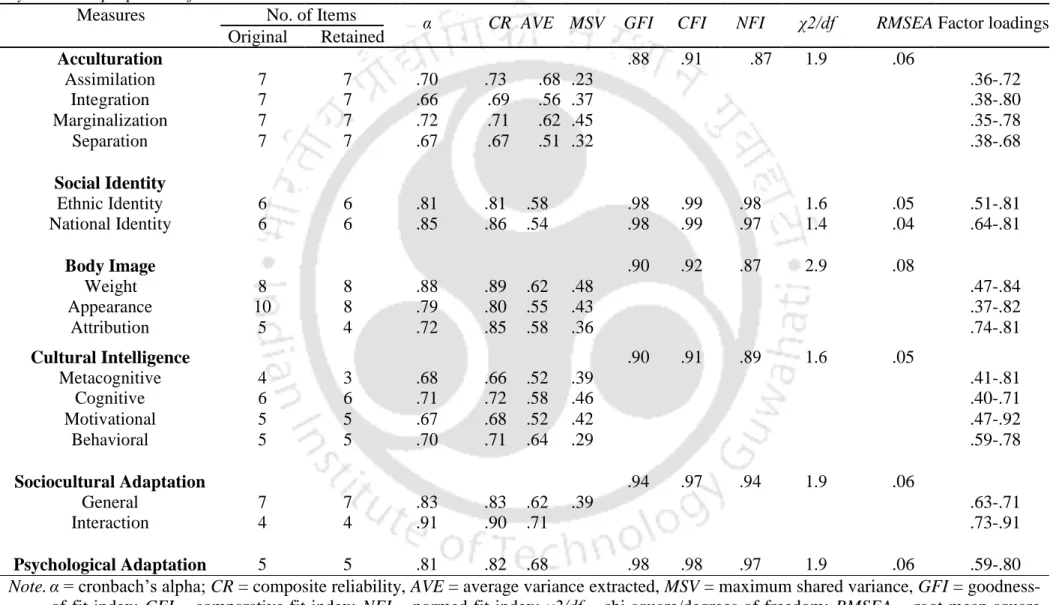
Conclusion
- Summary of Findings
- Implications
Such a pattern of findings supports the applicability of aspects of acculturation and social identity in the theoretical model proposed for the present context of acculturation. Interviewees mentioned deliberate efforts to adapt in terms of learning the language of conversation, clarifying misconceptions and stereotypes of mainland society, and more deliberate impression management strategies. These reported correlations between body image and acculturation strategies suggest a relationship between body image and self-esteem that is further reflected through acculturation efforts.
Several interview narratives reflected the manifestation of CQ in participants' behavior and cognition. Participants also told stories of efforts to correct the misconceptions and stereotypes of mainland society, which reflect attempts to manipulate the context of cultural contact to ensure better adjustment. Therefore, the acculturation context was designed so that life satisfaction, as indicated by the sample's psychological adjustment, was dependent on shedding their original culture and socially identifying with the new or national culture.
Now, the dominant melting pot attitude of continental society may also explain the findings related to the acculturation strategy of integration and adaptation, which were inconsistent with previous research findings. Quantitative findings indicated that the sample's psychological adjustment or life satisfaction was instead predicted by the assimilation acculturation strategy. Consequently, the sample's ethnic identity was unrelated to body image, as ethnic difference characterized their self-evaluation as a psychological minority with low social status and capital; and thus did not contribute much to self-esteem or appropriate body image.
However, the NE Indian diaspora did not have a strong relationship with mainland Indian culture (McDuie-Ra, 2013), nor did the current sample attempt to develop identification, as evidenced by the lower prevalence of the assimilation-acculturation strategy compared to the other strategies. The empirical analysis of the role of CQ in an acculturation context has yielded new findings that can be further tested in other contexts. On the other hand, in the case of the variables that reduced adjustment (separation acculturation, ethnic identity), CQ worked to reduce their diminishing effects.
Furthermore, the narratives from the qualitative study revealed that the sample recognized the network of larger interrelated economic, psychological and social factors that lead to prejudiced attitudes of continental society towards them.
